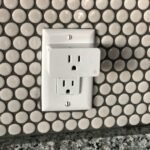Experience pure water at home and enjoy a healthier life.
Access to clean water is essential. A home water filtration system removes harmful chemicals and improves taste. According to the American Water Works Association, proper filters can remove up to 99% of contaminants.
Why Do You Need a Home Water Filtration System?
Even safe tap water may have trace chemicals and metals. A home water filter removes these impurities to help your family stay healthy.
Common Contaminants Removed by Water Filtration Systems:
- Chlorine: It disinfects water but leaves an unpleasant taste.
- Lead: This contaminant can harm health, especially in older homes.
- Pesticides and Herbicides: These chemicals come from agricultural runoff.
- Sediment: Dirt and debris can enter water from wells or aging pipes.
Pro Tip: Even if water looks clear, it may hide contaminants. Test your water to know what you need.
Types of Home Water Filtration Systems
There are many types of water filters. Each type fits different water quality and home needs.
Whole House Water Filtration Systems:
- These filters treat water at your home’s main entry point.
- They work well for large homes or water with many sediments.
- They often use several stages such as sediment and carbon filters.
Under-Sink Water Filtration Systems:
- Installed under a kitchen sink, they target drinking water.
- They may use reverse osmosis for deep purification.
- They are ideal if you need filtering for one faucet only.
Countertop or Pitcher Filters:
- These portable filters are easy to use.
- They work well for renters or small apartments.
- They remove chlorine, lead, and common contaminants efficiently.
Reverse Osmosis (RO) Systems:
- RO systems remove almost 99% of contaminants.
- They are excellent for homes with well water or higher contamination.
Pro Tip: Use a whole-house filter for heavy water use and lead issues. For everyday drinking water, choose an under-sink filter or RO system.
Pros and Cons of Different Water Filtration Systems
Weigh the pros and cons before choosing a water filter for your home.
Whole House Water Filters:
- Pros: They clean all the water in your home and remove sediment.
- Cons: They cost more and may need professional installation.
Under-Sink Filters:
- Pros: They are easy to install and focus on drinking water.
- Cons: They work for one faucet and need filter changes every 6-12 months.
Reverse Osmosis Systems:
- Pros: They remove a vast range of contaminants for very pure water.
- Cons: They waste some water and have a higher upfront cost.
Pitcher or Countertop Filters:
- Pros: They are inexpensive, portable, and require no installation.
- Cons: They filter less water and need frequent filter replacements.
Pro Tip: If water pressure is low, avoid RO systems. Choose an efficient under-sink filter to keep pressure high.
How to Choose the Right Water Filtration System for Your Home
Pick a filter by checking water quality, household size, and your filtering needs.
Factors to Consider:
- Water Quality: Test your water to identify contaminants.
- Budget: Whole-house filters cost more; smaller systems are budget-friendly.
- Installation: Some filters need professionals while others suit DIY enthusiasts.
- Maintenance: Consider how often filters must be replaced.
Pro Tip: Renters and frequent movers should choose countertop or pitcher filters for ease and flexibility.
Benefits of Using a Home Water Filtration System
A water filtration system gives your family safe, clean water. It also saves money and reduces plastic waste.
Health Benefits:
- Improved Taste: Filtered water tastes fresh and clean.
- Reduced Contaminants: It removes harmful chemicals and metals.
- Better Skin and Hair: Removing chlorine may improve skin condition and hair texture.
Environmental Benefits:
- Reduced Plastic Waste: Using a home filter lowers the need for bottled water.
- Sustainability: Many filters use eco-friendly materials that can be recycled.
Pro Tip: A water filter reduces plastic bottle use, saves money, and helps protect the environment.
How to Maintain a Water Filtration System
Good upkeep keeps your water filter working well. Follow these simple tips to extend your system’s life.
Maintenance Tips:
- Replace Filters Regularly: Follow the manufacturer’s guidelines for filter changes.
- Clean Components: Wash any reusable parts to prevent buildup.
- Check Water Pressure: Monitor systems like RO units, as pressure may drop when filters clog.
Pro Tip: Set a reminder on your phone to change filters on schedule.
5. Conclusion:
Investing in a water filtration system is a smart choice. It provides safe, clean water for your family. Whether you choose a whole-house filter or an under-sink system, you can enjoy improved health and taste.
Ready to make the switch? Check this filter on Amazon: https://amzn.to/3Y1BAsX
As an Amazon Associate I earn from qualifying purchases.
Frequently Asked Questions
Q: How often should I replace my water filter?
A: Replace your filter as recommended by the manufacturer, usually every 6-12 months.
Q: Is a whole-house system better than an under-sink system?
A: A whole-house system treats water at every tap, while an under-sink system focuses on drinking water only.
Q: Can I install a water filter myself?
A: Many systems are DIY-friendly. Some models may need professional installation.
Explore this topic: Household
Last updated on August 7, 2025








